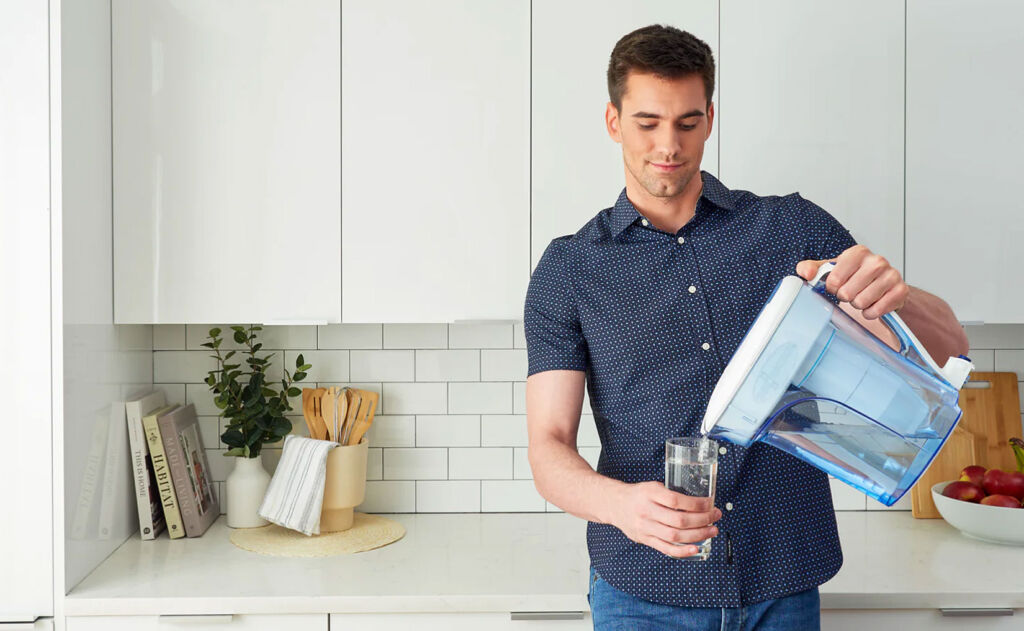
Brits often say that their tap water is completely safe, but is that true? Human ingenuity has resulted in the creation of forever chemicals, and they are now finding their way into our tap water. The big problem with them is they can harm one’s health. Fortunately, ZeroWater has created a range of innovative water filters to help remove all ‘nasties’, and we agreed to put one to the test.
PFAS (Per- and polyfluorinated alkyl substances), aka Forever Chemicals, are now part and parcel of everyday life. First developed in the 1940s, these chemicals, which have proven helpful in many ways, have a more sinister side, and it is the negative impact they can have on one’s health.
One thing that makes PFAS different from other chemicals is that they do not degrade either environmentally or metabolically, meaning the majority of people are walking around with them in their bodies unless they’ve lived a life like Howard Hughes did in his final years.
About PFAS/Forever Chemicals
When you hear the name Forever Chemicals, it sounds charming, almost pleasant; however, that couldn’t be further from the truth. Behind the somewhat non-threatening name are at least 10,000 chemicals, and as you’ve probably guessed, the reason for the name is they are said to last forever. It has yet to be determined precisely how long PFAS/Forever Chemicals will last; a safe conclusion is they will be around longer than we modern humans have been on the planet thus far.
Some reading this might think, “There’s all manner of strange things and chemicals in the things I consume, and I feel fine; what’s the problem?”

The problem is that more and more research shows forever chemicals can be highly damaging to one’s health, and often, the health issues don’t reveal themselves until later in life.
Forever chemicals are invisible to the naked eye. They are widely distributed in our environment and used in things such as carpets, furniture, lubricants, food packaging, Teflon-coated products, etc.
Of the many 1000s of PFAS, two are of enormous concern and are almost sure to be in household tap water. The first is PFOA (Perfluorooctanoic Acid), which has been linked to testicular and kidney cancer, ulcerative colitis, thyroid disease, pregnancy-induced hypertension and high cholesterol.
The other is PFOS (Perfluorooctane Sulfonate), which is linked to developmental, kidney, thyroid, reproductive and liver disease.
What is just as shocking is even at relatively low levels¹, PFOA and PFOS have been linked to something called Immunotoxicity². Studies on the impact of PFOA and PFOS on animals show that they suppress antibody responses, and it is thought they do the same in humans.
It would be unfair for us to point the finger at the water utility companies, as they are highly regulated³ and do their best to minimise amounts to a safe level. However, even with the best efforts, tiny levels of the chemicals still continue to accumulate over time in the body, and this is where the problems start.
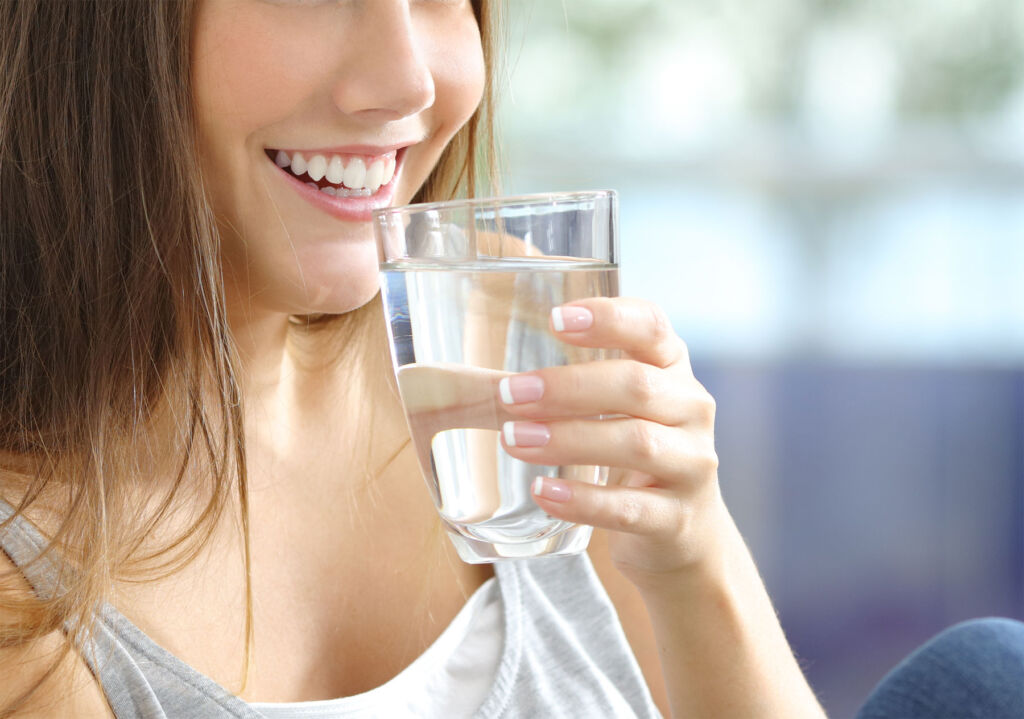
Minimising the consumption of forever chemicals is an almost impossible task, given that many of the things we consume (vegetables, meats etc.) in the main get the same water we do. However, there is some good news, there is an affordable product in the market that claims to be able to remove all impurities from tap water, and it goes by the name the ZeroWater Water Filter.
We’ve written about the danger forever chemicals pose previously, and we didn’t hold out much hope that the ZeroWater water filter would be able to remove the minuscule and dangerous particles. The only way we would know is by putting it through some tests.
To help make our testing much simpler, ZeroWater includes something to test water quality, which led us to believe that they were confident their product could do what it claims.
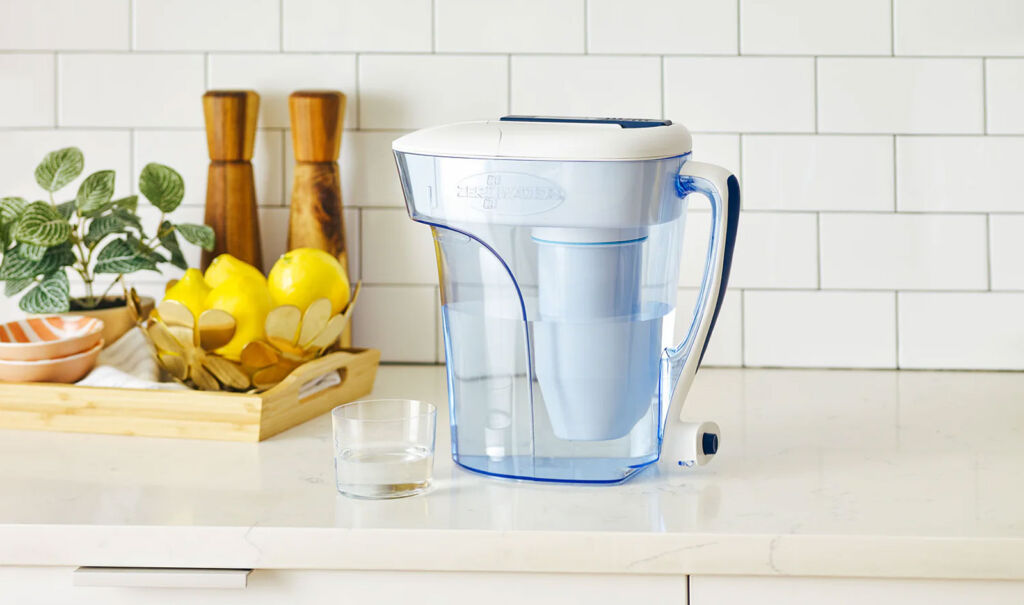
The ZeroWater 12 Cup 2.8L Dispenser
The water dispenser sent to us was the ZeroWater 12 Cup 2.8L Dispenser. One of the first things we noticed was a blue button on its side, which we discovered operates as a tap when pressed.
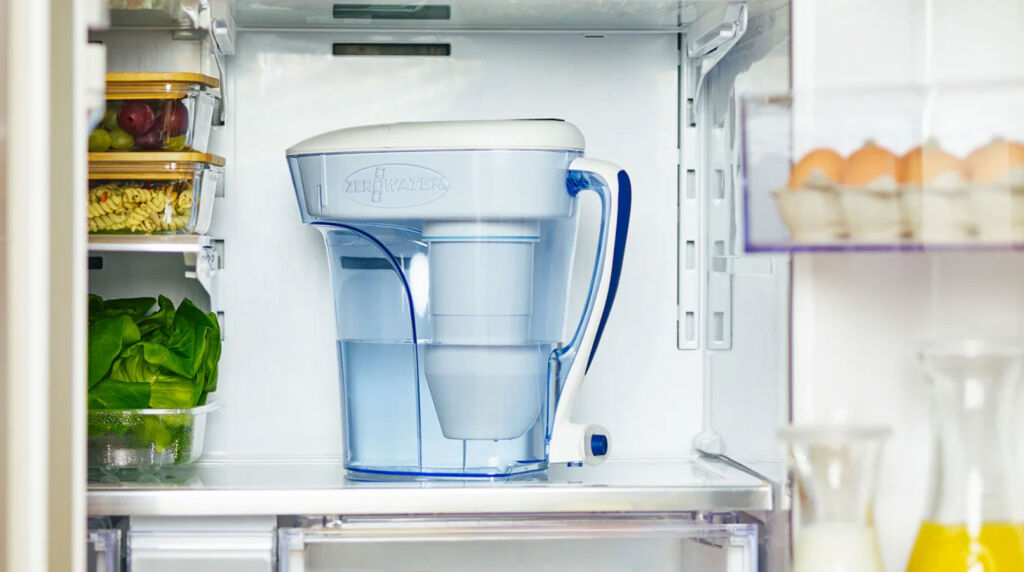
ZeroWater has obviously put a lot of thought into its design. Its size and shape allow it to be placed safely on a refrigerator shelf or kitchen work surface, making access to the water a ‘doddle’; it is also BPA-free in its construction, which gives it another tick in the health chart.
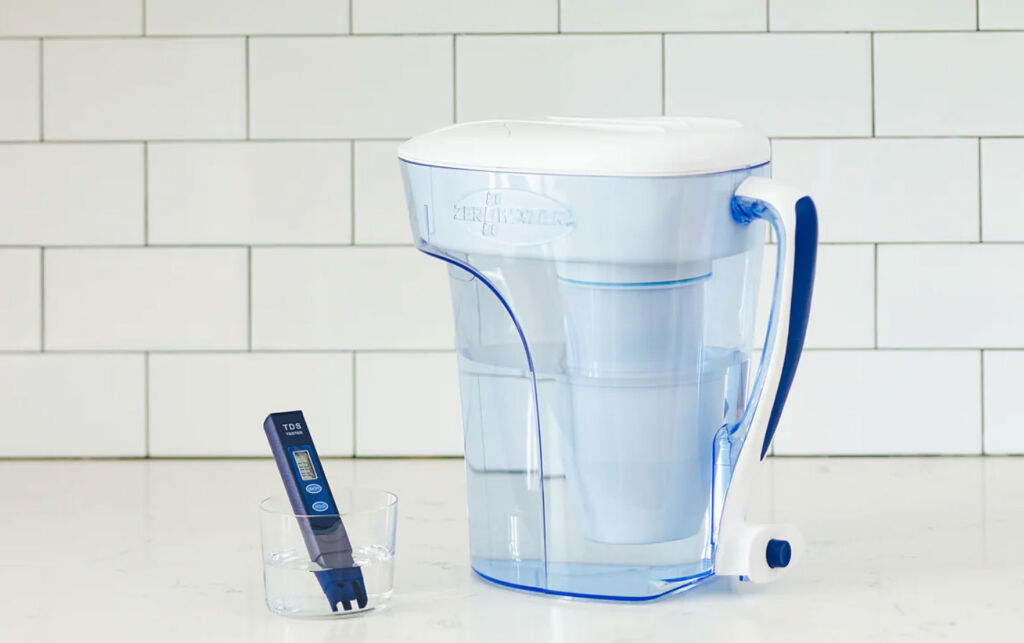
The blue stick in the image with the lighter blue-coloured ovals is a digital water tester that comes with the water filter and is incredibly simple to use. Its lower part is a plastic cap protecting the technology, and you remove this and place the stick at the recommended depth into any water to get a reading of the quality.
Finally, we must mention the actual filter module, which surprised us with its large size. Unlike most other water filter jugs that utilise a carbon two-stage filtration system, the ZeroWater filter uses a five-stage patented system to remove organic and inorganic contaminants, and in addition, it boasts Ion Exchange Technology.
The water filter comes with decent instructions, which include a numeric guide to water quality:
- 000-001: Readings showing this number meet the FDA definition of purified bottled water and that no known municipalities exist.
- 002-050: This number indicates that the water is of moderate quality but can still have dangerous impurities such as lead.
- 051-200: The typical range and most water in the UK will fall into this grouping.
- 201-300: Numbers in this range indicate a high contaminant level
- 301-400: An exceptionally high contaminant level
- 401+: Anything from this number upwards is considered extreme, with the highest TDS water.
Our testing
We had few expectations about what the ZeroWater Water Filter is capable of as it comes with a surprisingly realistic price tag, given what it claims to be able to do.
The obvious place to start our testing was with our standard tap water. We took a dry, clean glass cup from the cupboard and filled it with water from the tap. As expected, the result wasn’t something to cheer about; on the three times we tested the tap water, the numbers ranged from 146 to 186.
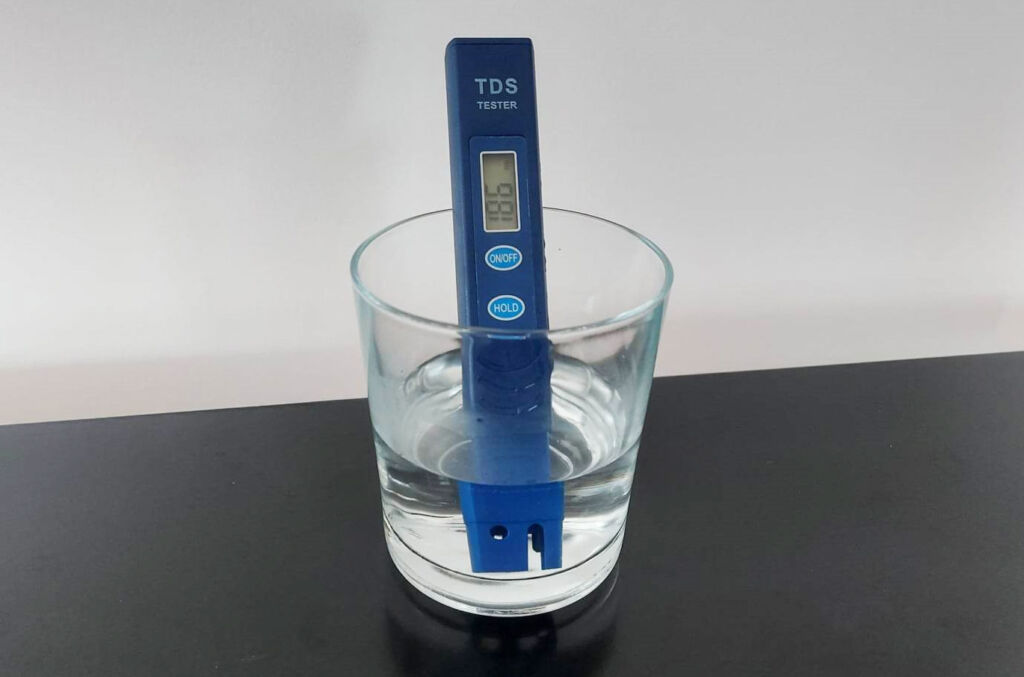
Although our water utility company changed all the water pipes last year, we need to factor in that we are the very last house on the edge of a village, which could help to explain the result.
For our next test, we decided to see whether boiled tap water would be any different. After all, we’ve always been led to believe that boiling makes the water cleaner.
We boiled one litre of water in our ‘state-of-the-art’ KitchenAid Kettle and poured it into a new cup after the water temperature had cooled. Incredibly, the numbers were hardly different from what came out of the tap (144-183).
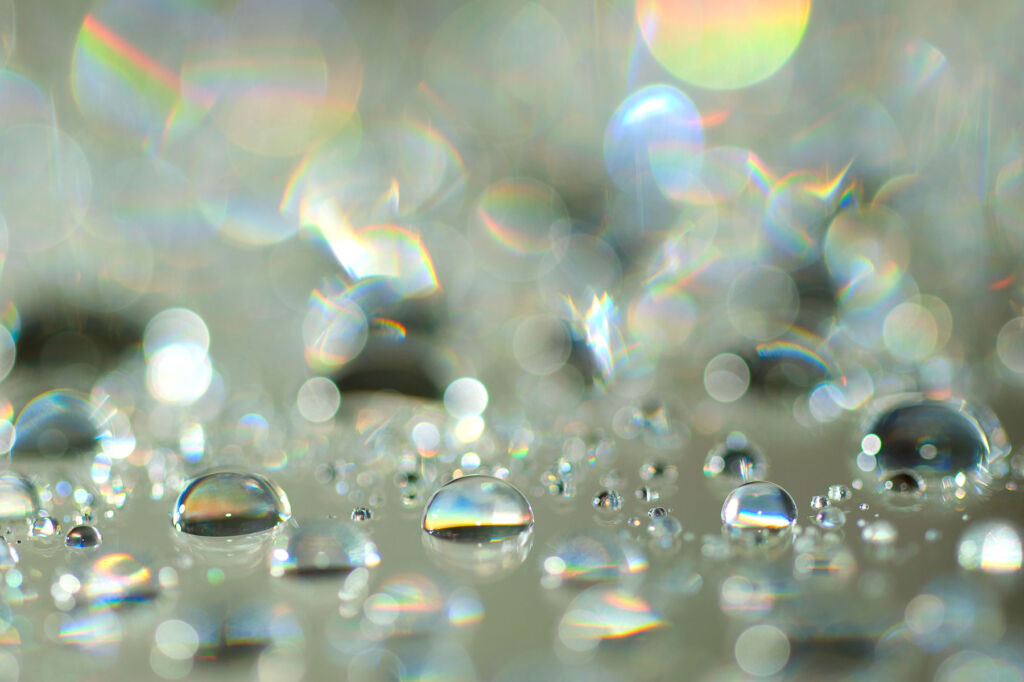
One of the tests we were most eager to perform was on pure rainwater. Although it has long been said that rainwater is as ‘good as it gets’, given the number of contrails seen in the sky and the potential for airborne viruses, chemicals and other contaminants, it is possible that rainwater might not be as pure as some would imagine.
We placed a glass container outdoors in the Lancashire countryside, in an elevated position away from properties and vehicles, and covered it with a double layer of ultra-fine mesh netting. After a couple of hours of rain, we obtained a sufficient quantity of water and tested it with the digital meter. The reading was 0.02, meaning it was just about as pure as possible but still a smidgeon below perfection.
Pleased with this result, we then moved on to our existing carbon water filter jug, which we use daily. Like many others, we weren’t sure how long the filter had been in the jug.
However, we were confident that it would, at the very least, result in a good reading as it had the advantage of a filter. We were amazed that the readings were, worryingly, almost exactly the same as those we obtained from the water out of the kitchen tap.
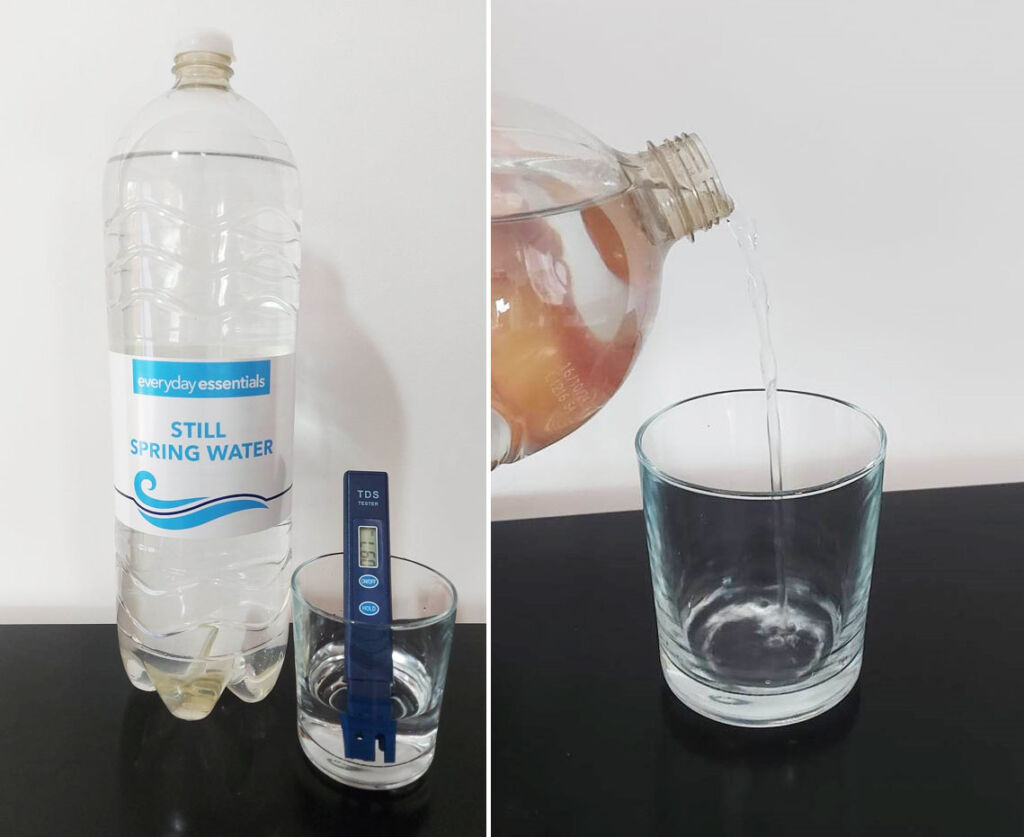
We then decided to take things up a notch by using a new and unopened bottle of Still Spring Water. The bottle labelling stated that the Spring Water was sourced from the Chase Spring in the heart of Staffordshire and was bottled at source.
Our expectations were high, and we both predicted a single-digit score. How wrong we were; the digital water tester gave a reading of 97!
The high reading made us think that maybe it was little more than standard tap water, which had been put through a filter; surely that couldn’t be the case, could it?

The final thing on our list was testing the water from the ZeroWater filter. Given that the shop-bought spring water had produced a surprisingly high reading, we were unsure what the result would be.
Incredibly, the filtered water gave a reading of 0.00, and this was not an isolated case; we tested the water in two other dry glass cups at different times, and the result was the same, water clarity perfection.
Although nature had fallen just short of water clarity perfection in our testing, the good news is we now know how to find it.
Final thoughts
The ZeroWater Water Filter far exceeded our expectations and is one of those rare products that can bring some peace of mind at a time when many things in the world seem to be out to ‘get you’.
Ridding oneself completely of Forever Chemicals is a nigh impossible task as some foods will need to be washed before consumption, and the animals supplying our meats drink the same water as we do, and so it goes on.
Given the potential health issues that could arise from the ongoing accumulation of PFAS ‘Forever Chemicals’ in our bodies, the only thing we can do is limit them, and a good way to do this is by having a ZeroWater Water Filter in the home.
ZeroWater Water Filter – Where and how?
The ZeroWater filters range from £29.99 for a 7-cup 1.7L jug to £259.99 for a floor-standing water cooler base with an 80-cup 23L bottle. The product we tested was the ZeroWater 12 Cup 2.8L Dispenser, and it has an RRP of £44.99. You can learn more about the company, and its patented technology, access independent data studies, and purchase at www.zerowater.co.uk.
- ¹ https://www.sciencenews.org/article/pfas-forever-chemicals-health-risk-water?fbclid=IwAR26Rc7XJIMJbMemezONuRogWBGb6-jjuTtH8hN5FN2byx6a7E9qXwTshME
- ² Ummuniotixicity study: https://ntp.niehs.nih.gov/whatwestudy/assessments/noncancer/completed/pfoa/index.html
- ³ https://www.dwi.gov.uk/drinking-water-standards-and-regulations/
Read more health news, reviews and guides here.
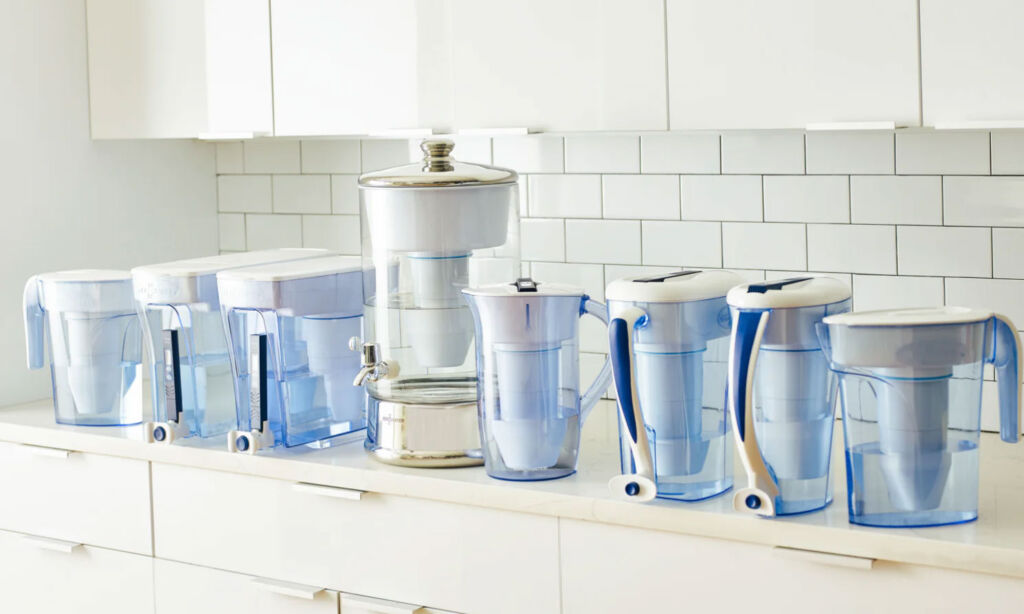
![]()

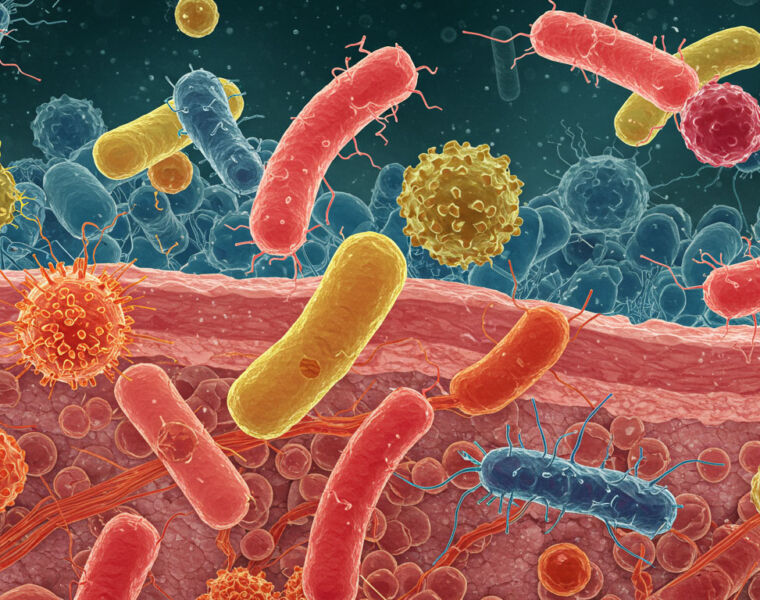
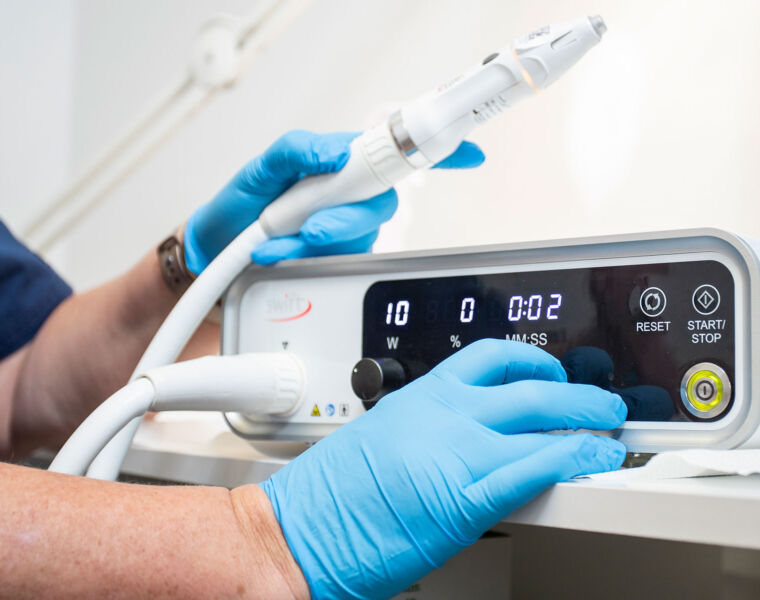
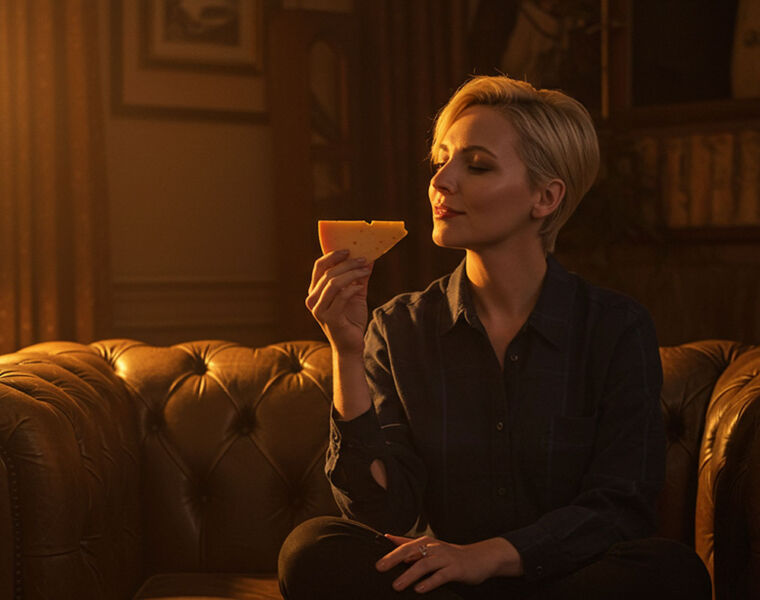
You must be logged in to post a comment.